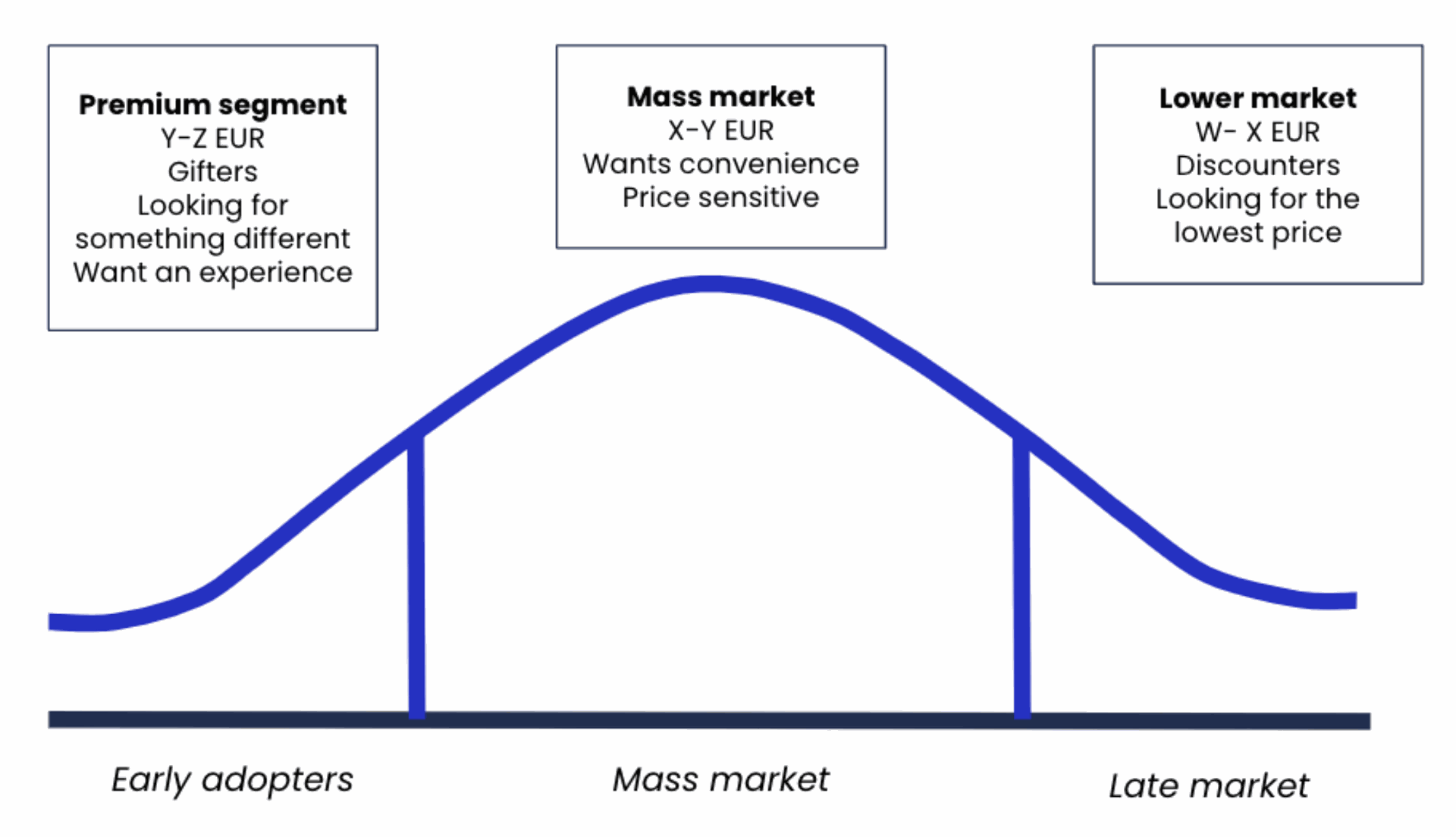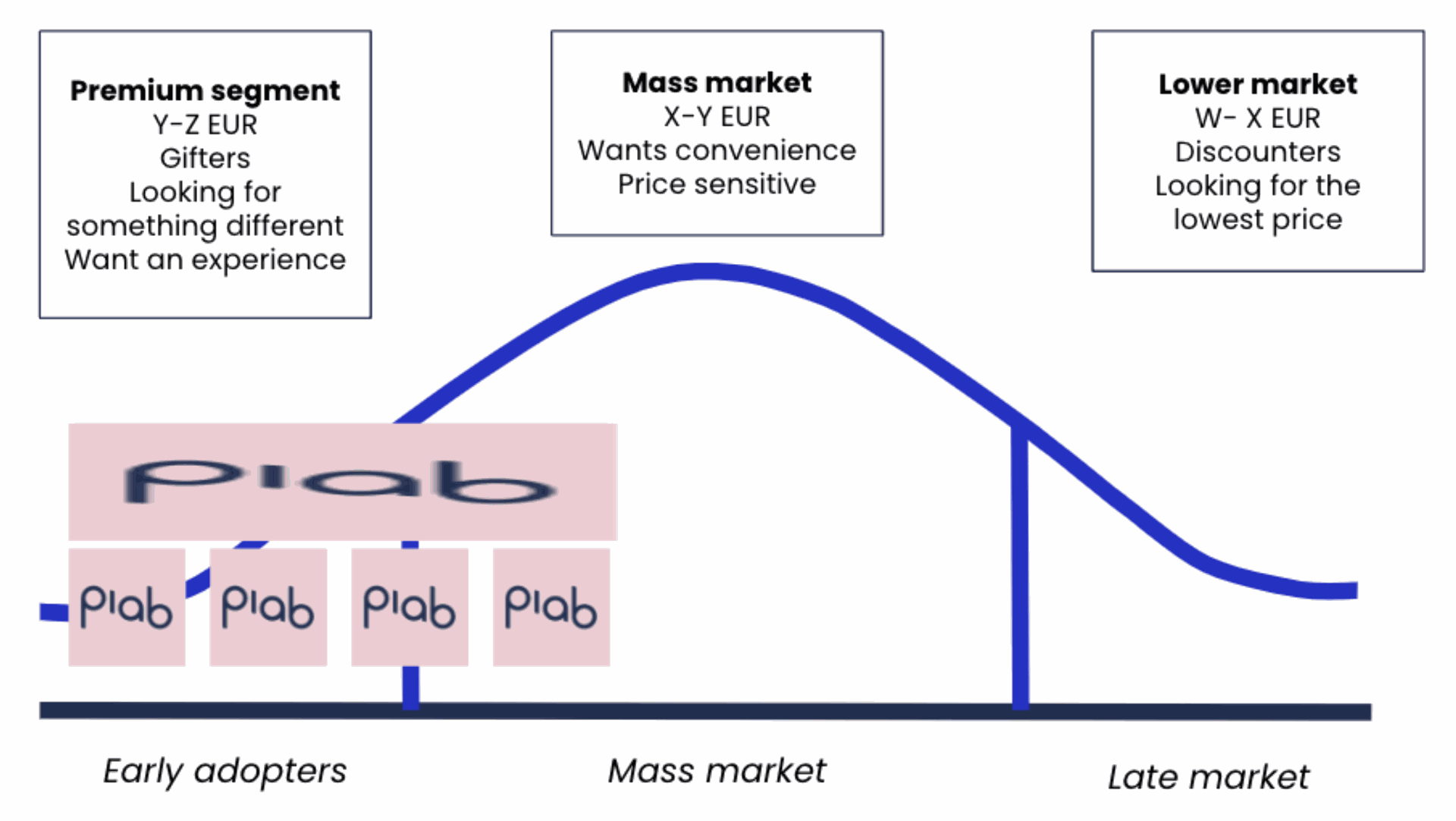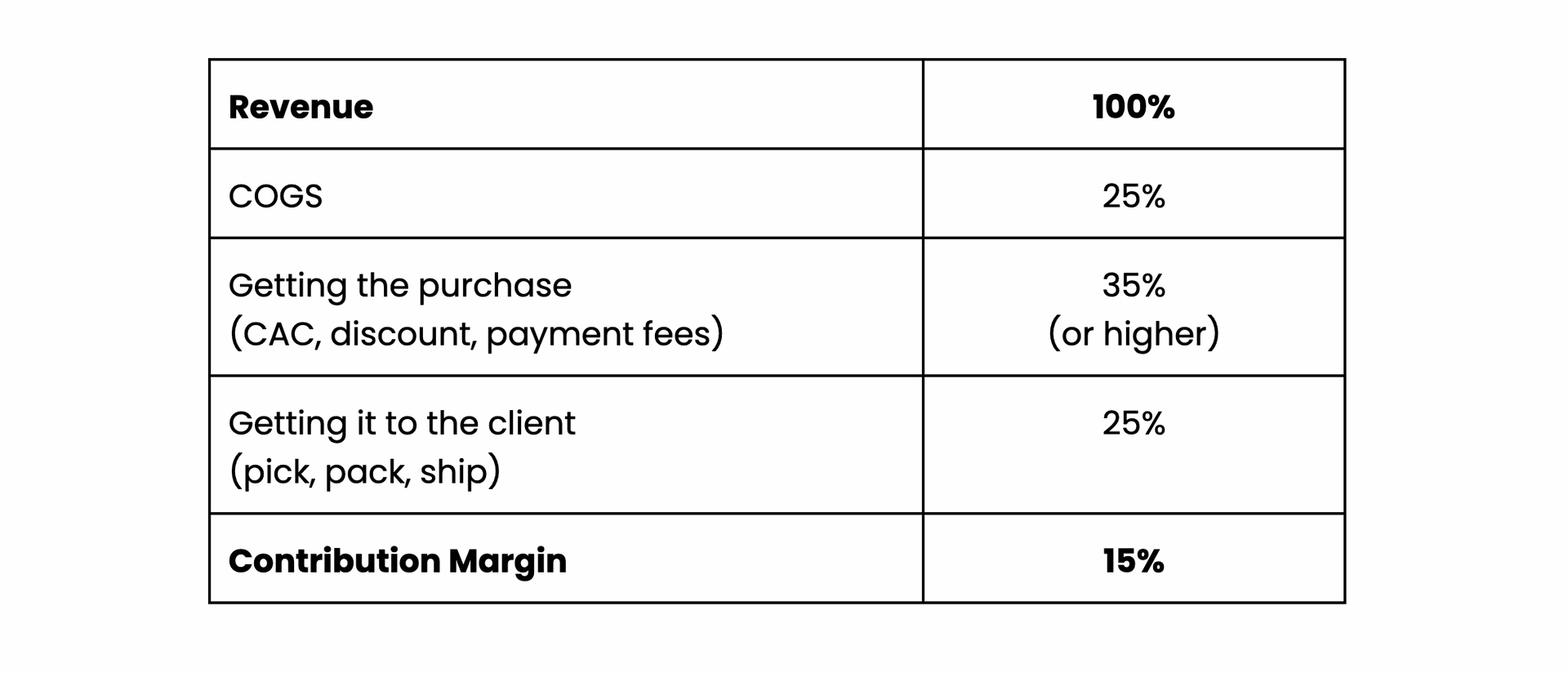 Volume play vs premium play 💎🪨
Volume play vs premium play 💎🪨
GENERAL
Jan 05, 2022 - 10 min read
The Innovation Adoption Lifecycle
I should have known about this before 2021 but apparently it wasn’t explained to me that well …
or I didn’t see how this was applicable to what we are doing.
As a DTC brand it’s important to have a look at this (if you want to have a better understanding of this model, read this).
Most DTC brands will find themselves in the categories “Innovators” & “Early Adopters”. Some will position themselves in the “Early Majority” but almost none will be positioned in “Late Majority” or “Laggards”.
Each of these categories, when translated to your industry, have a specific purchasing pattern. And e-commerce, in my opinion, only has a place in a few of them.
To simplify it, this is how I believe most markets look:

Where e-commerce can play a role:
Premium segment
- Sales mainly via individual webshops
- Higher willingness to pay
- Lower volume
Mass market
- Convenience is very important
- Volume increases but willingness to pay decreases
- Still potential to sell via an individual webshop but these customers really love marketplaces
Late market
- A lot of volume but low willingness to pay
- These buyers will often be retail focused (and a bit marketplaces) as the e-comm unit economics are not that interesting
Why is it important to know in which segment you are? Because this has significant consequences for your business model and strategy. The more you are positioned to the left, the higher the willingness to pay is but the smaller your market will be. The more you are positioned to the right, the more volume you can do, but your potential customers will be more price sensitive.
I hear the smartasses think: well couldn’t we just sell our products more premium on a webshop and then a bit cheaper on marketplaces & retail? That will work right? Well unfortunately it’s not that easy… you have to get something else right as well: “Your Brand.”
If I look at Branding I see what’s called a “Complex system”. For people who want to learn more about this phenomenon you can read about this here. But I look at it as: There is no fixed input or steps that you can take to become a certain output, a specific input can have different outputs depending on a lot of different factors that come into play. As a result you need to be very careful with the choices you make because it’s not always easy to anticipate the outcome.
So what does this have to do with DTC e-commerce? Well, if you are in the premium segment and you want to stay there. You need to be careful with the choices you make. You will be tempted to search for volume (go more to the right on the graph) but this can have a negative impact on your brand. Thus just positioning your brand on all the spots in the market and tailoring to all the potential requests from customers all over the market might be a bad idea. Because if you want to be perceived as a premium brand and you are very present in The Mass Market this might diminish the “premiumness” of your brand.
To make it a bit more tangible for our own brand Puzzle in a Bag:
- We want to be a premium brand in the market and are asking for the corresponding higher price tag.
- But in our search for volume, should we be available on Bol? On Amazon? In Retail? Which retailers: concept stores, specialty stores, Carrefour, Action?
- Or another one I heard a while back: Should you as a premium soap brand be available in hotels, if yes, which hotels?
You will constantly get requests from “the mass market”…. But I'll talk about this more in the next section (DTC side benefits).
So for every brand the question is, where will we position ourselves:

Last thing to take into account regarding this Volume vs Premium play are the unit economics and the business model of DTC brands, from what I have seen a lot of young DTC brands have numbers like this:

Leaving the DTC brand with a contribution margin (margin that you can use to cover your fixed costs) of 10-15%. This might even be high for brands that want to grow very fast and/or have a more LTV(= Lifetime Value) play with their customers. And let’s face it.. The big advertising platforms are not getting any cheaper.
This means that companies with 500k in revenue are only able to cover 50-75k fixed costs, which is peanuts if you are striving for fast growth.
This situation is often combined, as said before, with a position in the Premium segment of the market. Meaning: good prices but lower volume. As a result it can take quite some time to get to the 7 figure revenues which you might need to be sustainably profitable.
So what does that all mean? Should we all raise a buttload of money? Should we all stop doing what we’re doing? Should we all just sit and cry in a corner? All of the above? Or should we just skip the premium segment and all focus on the mass market?
Well first of all, there are still stories of DTC brands that have insane growth stories purely via their online store. But from what we are seeing the bootstrapped stories are getting scarcer.
So what’s the point then of having a DTC e-commerce brand? Well… DTC e-commerce has a lot of side benefits, which I will explain in our next blogpost!
As always, if you have any questions don't hesitate to reach out.

